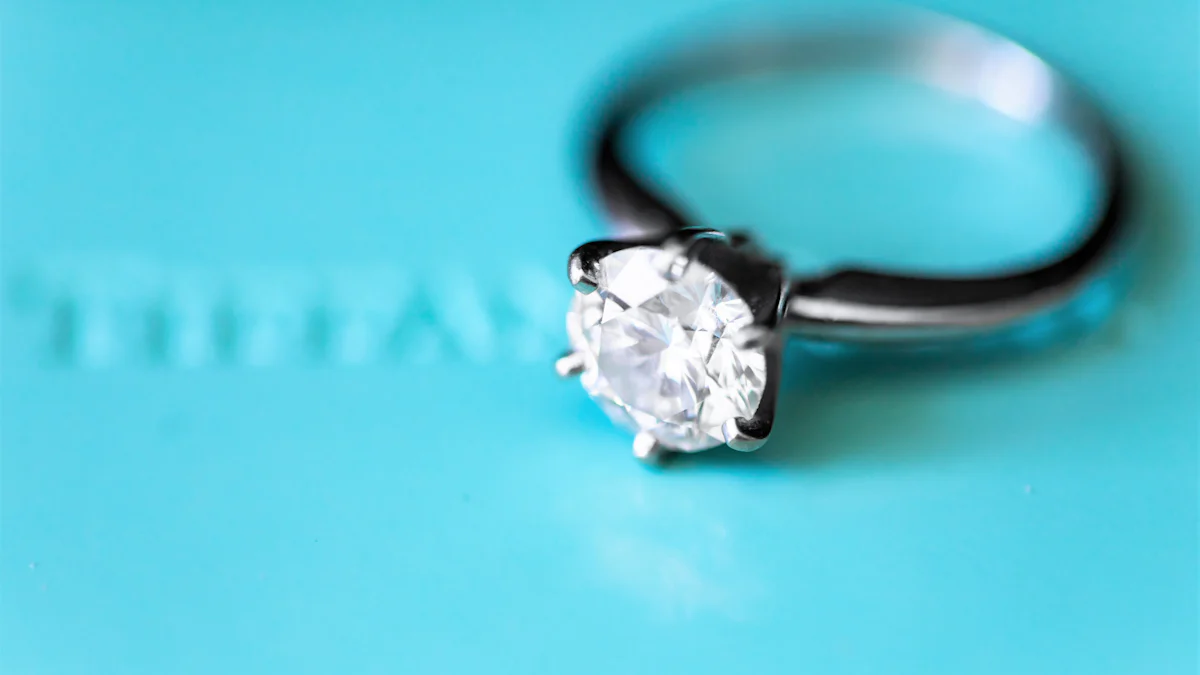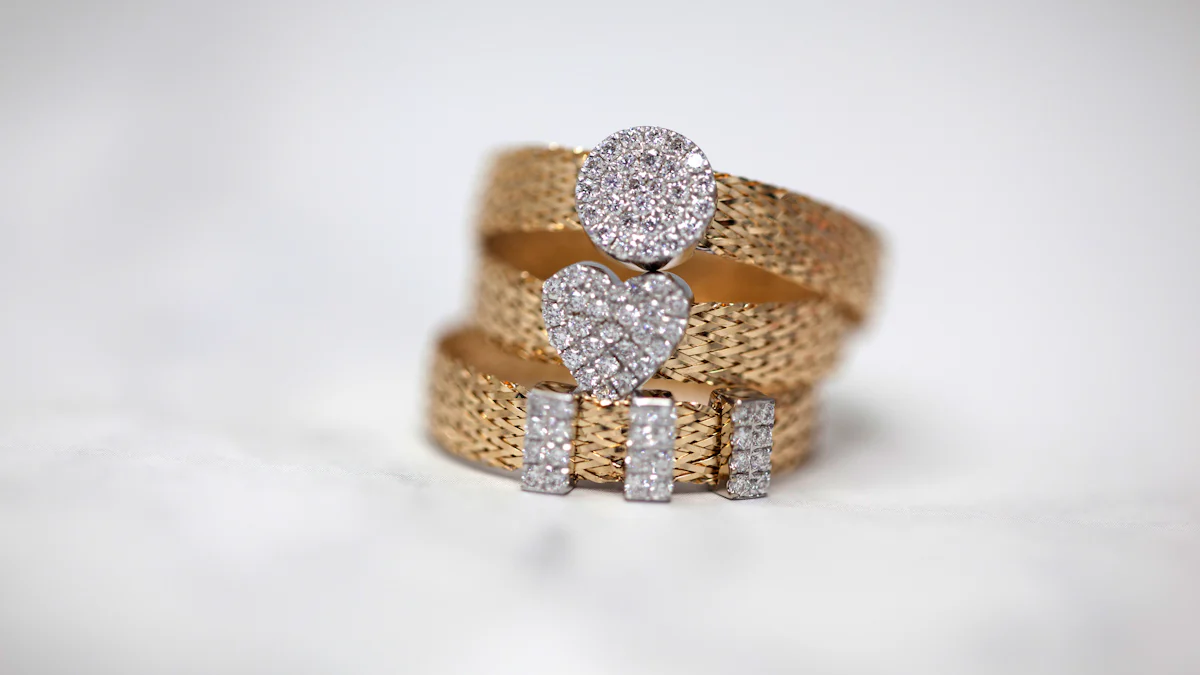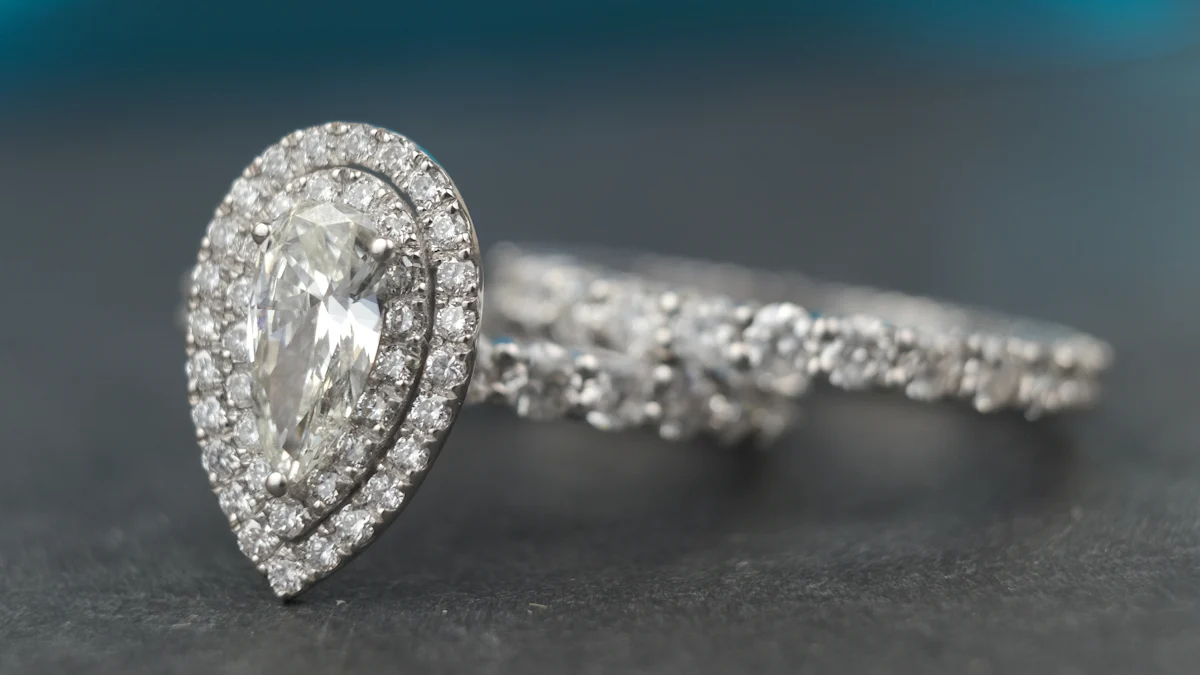Guide to Diamond Ct Sizes

When you think about diamonds, you might wonder, "How big is a carat?" A carat measures the weight of a diamond, not its size. One carat equals 0.2 grams. However, the physical dimensions, like length and width, define the actual size. For instance, a 1-carat diamond typically has a diameter of about 6.5mm. But remember, diamond ct sizes can vary based on the cut and shape, affecting how large they appear. So, while carat weight is crucial, it doesn't tell the whole story about a diamond's size.
Understanding Diamond Carat
Definition of Carat
When you hear the term "carat," you might think of size, but it actually refers to weight. A carat is a unit of measurement used to determine the weight of a diamond. Specifically, one carat equals 0.2 grams or 200 milligrams. This standard applies universally in the gem industry, ensuring consistency no matter where you are in the world. Each carat is divided into 100 points, allowing for precise measurements. For example, a diamond weighing 0.75 carats can also be described as 75 points. This precision helps jewelers and buyers alike understand exactly what they're dealing with.
Historical Context of Carat Measurement
The history of carat measurement is quite fascinating. It all began with the carob seed. Ancient gem traders used these small, uniform seeds as counterweights on their balance scales. The seeds' consistent mass made them ideal for this purpose. Over time, the carat became a standardized unit of weight in the gemstone industry. Before the 1500s, merchants used the carat to measure gold. By the 1570s, diamond and gemstone merchants had adopted this measurement for loose stones.
The modern carat system, as we know it today, was established in the early 20th century. In 1907, during the Fourth General Conference on Weights and Measures in Paris, the carat was officially defined as 200 milligrams, or one-fifth of a gram. This definition has remained unchanged since 1913, providing a reliable standard for the industry. Thanks to this history, when you purchase a diamond, you can trust that its carat weight is measured accurately and consistently.
Carat Size vs. Physical Size

When you're measuring diamond size, it's crucial to understand the relationship between carat size and physical dimensions. You might think that a higher carat weight always means a bigger diamond, but that's not entirely true. Let's dive into how carat weight relates to the actual size of a diamond and what factors can affect how big it appears.
How Carat Weight Relates to Physical Dimensions
Carat size refers to the weight of the diamond, with one carat equaling 0.2 grams. However, this doesn't directly translate to the diamond's physical size. For example, a one-carat diamond typically measures around 6.5mm in diameter if it's a round cut. But, the same carat weight in a different shape might have different dimensions. The way a diamond is cut can influence its spread, or how large it looks from the top view. So, while carat size gives you an idea of the diamond's weight, it doesn't always reflect its actual size.
Factors Affecting Perceived Size
Several factors can make a diamond appear larger or smaller than its carat weight suggests. Let's explore these factors:
Cut
The cut of a diamond plays a significant role in its perceived size. A well-cut diamond reflects light beautifully, making it appear larger and more brilliant. On the other hand, a poorly cut diamond might look smaller and less vibrant, even if it has the same carat size. The cut affects the diamond's depth and table size, which are crucial in determining how big it looks. For instance, a shallow cut can make a diamond appear larger, while a deep cut might make it look smaller.
Shape
The shape of a diamond also impacts its appearance. Some shapes naturally look bigger than others of the same carat weight. For example, elongated shapes like marquise, oval, and pear can make a diamond seem larger because they cover more surface area on your finger. Similarly, an emerald cut, with its broad, flat facets, can give the illusion of a bigger diamond. Fancy shapes often look bigger for their carat weight compared to round diamonds. When you're choosing a diamond, consider how the shape affects its perceived size.
Understanding these factors helps you make informed decisions when measuring diamond size. Remember, one carat doesn't always mean the same thing in terms of physical size. By considering cut and shape, you can find a diamond that looks just right for you.
Impact of Carat Weight on Appearance and Price
When you choose a diamond, its carat weight significantly influences both its appearance and price. Understanding this impact helps you make informed decisions.
Visual Impact of Carat Weight
Carat weight affects how a diamond looks. Larger carat weights often mean a more noticeable diamond. However, the visual impact isn't just about size. A well-cut diamond can appear larger than its actual carat weight suggests. For example, a one-carat diamond with an excellent cut might look bigger and more brilliant than a poorly cut diamond of the same weight. The shape also plays a role. Elongated shapes like marquise or oval can make a diamond seem larger. So, when considering carat weight, think about how it will look on your finger and in different settings.
Price Implications
Carat weight directly impacts the price of a diamond. As carat weight increases, the price per carat also rises. This is because larger diamonds are rarer and more desirable. You might notice that a two-carat diamond costs more than twice as much as a one-carat diamond. This is due to the exponential increase in value as size increases. When you shop for diamonds, keep in mind that the price isn't just about weight. The cut, color, and clarity also affect the value of diamonds. Balancing these factors helps you find a diamond that fits your budget and preferences.
Diamond Carat Size Chart
A diamond carat size chart is a valuable tool for visualizing how different carat weights translate into physical size. This chart provides a reference for understanding the dimensions of diamonds at various carat weights. By using a diamond size chart, you can compare the sizes of different shapes and cuts. This helps you see how a one-carat round diamond compares to a one-carat oval diamond, for example. Downloading a diamond carat size chart can guide you in selecting the right diamond for your needs. It offers a clear picture of what to expect in terms of size, helping you make a confident choice.
Choosing the Right Carat Size for a Diamond Engagement Ring

Selecting the perfect diamond carat size for your engagement ring can feel like a big decision. You want it to reflect your style and fit comfortably within your lifestyle and budget. Let's explore some key considerations to help you make the best choice.
Considerations for Setting Style
The setting style of your diamond engagement ring plays a crucial role in how the diamond carat size appears. Different settings can enhance or diminish the perceived size of the diamond. For instance, a halo setting, which surrounds the center stone with smaller diamonds, can make a smaller diamond look larger. On the other hand, a solitaire setting focuses all attention on the center stone, making it ideal for showcasing a larger diamond carat.
When choosing a setting, think about your personal style. Do you prefer something classic and timeless, or are you drawn to modern and unique designs? Your setting choice should complement the diamond carat size and reflect your personality. Remember, the setting not only affects the look but also the security of the diamond, especially if you're considering buying loose diamonds to customize your ring.
Finger Size and Proportions
Your finger size and proportions significantly influence how a diamond engagement ring looks on your hand. A diamond that appears large on one finger might seem smaller on another. If you have slender fingers, a smaller diamond carat size might look proportionate and elegant. Conversely, if you have larger fingers, you might prefer a bigger diamond to achieve the desired visual impact.
Consider trying on rings with different diamond carat sizes to see how they look on your hand. This hands-on approach helps you visualize the proportions and decide what feels right for you. Keep in mind that elongated shapes, like marquise or oval, can make a diamond appear larger, which might be a great option if you're aiming for a bigger look without opting for a two carat diamond.
Budget Considerations
Budget is a critical factor when choosing a diamond carat size. Larger diamonds are rarer and more expensive, so it's essential to balance your desires with your financial reality. Start by setting a budget and exploring options within that range. Remember, the diamond carat size isn't the only factor affecting price. The cut, color, and clarity also play significant roles.
A diamond engagement ring checklist can be a helpful tool in this process. It ensures you consider all aspects, from carat size to setting style, and helps you stay within your budget. If you're open to flexibility, consider slightly lower carat weights, like 0.9 instead of 1 carat, which can offer significant savings without a noticeable difference in size.
Choosing the right diamond carat size involves balancing aesthetics, comfort, and cost. By considering setting style, finger proportions, and budget, you can find a diamond engagement ring that perfectly suits your needs and preferences.
Choosing the right diamond involves more than just picking a carat weight. You need to balance the 4 C's: carat, cut, color, and clarity. While larger carat weights might catch your eye, remember that a well-cut diamond can maximize its beauty, even if it's smaller. Consider your personal style and budget when selecting the ideal diamond dimensions. Popular full carat weights offer a range of options, but the best choice is one that reflects your unique preferences. Ultimately, your diamond should be a reflection of you, combining size with quality for a truly stunning piece.
FAQ
What is the difference between carat weight and diamond size?
Carat weight measures a diamond's weight, not its physical size. While a 1-carat diamond typically has a diameter of about 6.5mm, the actual size can vary based on the cut and shape. Understanding this distinction helps you make informed decisions when selecting diamond ct sizes.
Does the carat weight affect the price of the diamond?
Yes, carat weight significantly impacts a diamond's price. Larger diamonds are rarer and more valuable, so as carat weight increases, the price per carat also rises. However, two diamonds with the same carat weight can have different prices based on cut, color, and clarity.
How does the cut of a diamond influence its perceived size?
The cut of a diamond affects how light reflects within it, influencing its brilliance and perceived size. A well-cut diamond can appear larger and more vibrant than a poorly cut one of the same carat weight. This is why cut quality is crucial when considering diamond ct sizes.
Why do different diamond shapes appear larger or smaller?
Different shapes distribute weight differently, affecting how large they appear. For example, elongated shapes like marquise or oval can make a diamond seem larger because they cover more surface area. Understanding these nuances helps you choose the right diamond sizes for your preferences.
How can I choose the right diamond ct size for an engagement ring?
Consider your personal style, finger size, and budget. A halo setting can make a smaller diamond look larger, while a solitaire setting highlights the center stone. Trying on different diamond sizes helps you visualize what looks best on your hand.
Does a higher carat weight always mean a better diamond?
Not necessarily. While a higher carat weight can indicate rarity, the overall quality depends on the balance of the 4 Cs: carat, cut, color, and clarity. A smaller, well-cut diamond can be more beautiful and valuable than a larger, poorly cut one.
Can small differences in carat weight affect the price significantly?
Yes, even small differences in carat weight can lead to significant price variations. This is due to the exponential increase in value as size increases. Understanding this helps you find the best value when exploring diamond ct sizes.
How does finger size affect the appearance of a diamond?
Finger size influences how a diamond looks on your hand. A diamond that appears large on one finger might seem smaller on another. Trying on rings with different diamond ct sizes helps you find the right proportion for your finger.
What is a diamond carat size chart, and how can it help me?
A diamond carat size chart visualizes how different carat weights translate into physical size. It helps you compare dimensions across various shapes and cuts, guiding you in selecting the right diamond sizes for your needs.
Is it possible to find a balance between carat weight and other factors?
Absolutely. Finding the optimal balance between carat weight, cut, clarity, and color maximizes a diamond's beauty and value. Prioritizing these factors ensures you choose a diamond that meets your aesthetic and financial preferences.
See Also
A Comprehensive Look at Engagement Ring Diamond Cuts
Your Ultimate Guide to Selecting a White Diamond Ring
A Deep Dive into Various Wedding Ring Diamond Styles

